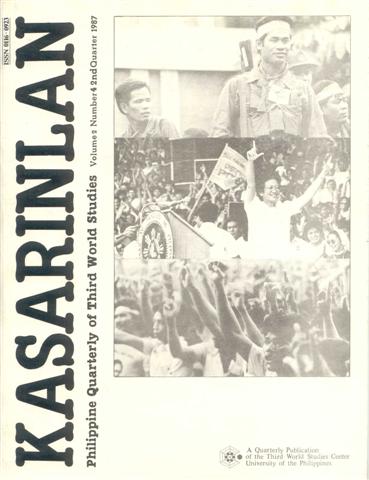The Fate of the Left
Abstract
The paper attempts to look at the fate of the Filipino Left after the February Revolution that replaced an authoritarian state with a liberal democratic state. The democratic state, which was brought about by mass insurrectionary activity and occurred at a time when the elite and conservative forces lost political monopoly and the masses have developed a means to effectively intervene in the state process, has distinct populist features and anti-fascist characteristics. From the perspective of popular democrats, this is a step towards better conditions for progressive popular empowerment but the absence of the national democrats during the crucial moment weakened the progressive flank and the anti-dictatorship coalition. The national democrats entered into a political settlement with the Marcos regime while the CPP-NPA-NDF committed itself to armed revolutionary struggle pluralized the left movement. By further asserting their role as the vanguard over independent movements and ideological tendencies, they fostered tensions between themselves and the other forces. The rise of an internal debate within the CPP-NPA-NDF on the direction and courses of action to be taken have further weakened the progressive bloc. In the immediate term, the progressive bloc is predicted to be fluid and at worst turbulent. Unless progressive groups and movements possess a sense of community to start with and maintain lines of dialogues, ecumenism on the Left cannot be achieved.
Published
2007-11-28
Issue
Section
Features
Keywords
EDSA Revolution; national democrats; pluralism; popular democracy; CPP; ecumenism
By submitting a manuscript, the authors agree that the exclusive rights to reproduce and distribute the article have been given to the Third World Studies Center.



